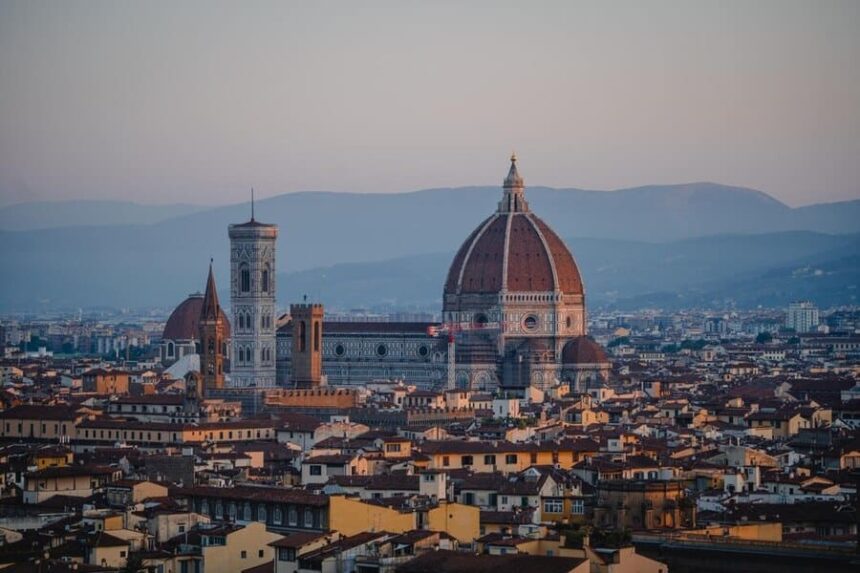Vatican City, the world’s smallest independent state, is known for its historical, religious, and cultural significance. Located in Rome, Italy, this tiny nation serves as the spiritual and administrative center of the Roman Catholic Church. But just how big is Vatican City in square miles? Despite its small size, it holds immense influence over millions of people worldwide.
Covering only a fraction of a square mile, Vatican City is smaller than many city parks, yet it houses some of the world’s most famous landmarks, including St. Peter’s Basilica and the Sistine Chapel. Understanding its geographical size helps put its unique status into perspective. This article explores the exact dimensions of Vatican City, its importance, and how it compares to other small territories.
How Big Is Vatican City in Square Miles?
Vatican City covers approximately 0.17 square miles (0.44 square kilometers), making it the smallest country in the world. Despite its size, it is home to the Pope, the Vatican Museums, and some of the most significant religious and artistic treasures in history. Located in the heart of Rome, Vatican City functions as an independent state with its government, postal system, and banking institutions.
What Is the Exact Size of Vatican City?
Vatican City spans just 0.17 square miles, making it the world’s smallest country by land area. This compact territory is enclosed by a 2-mile border with Italy, distinguishing it from the surrounding city of Rome. Despite its minuscule size, Vatican City operates as a sovereign nation with its governance, laws, and economy.
The small land area means that nearly every inch of Vatican City is used efficiently. St. Peter’s Basilica dominates the skyline, while the Vatican Gardens offer a peaceful retreat within its walls. The limited space also means that the population is small, with fewer than 1,000 residents, most of whom are clergy, security personnel, or administrative staff.
The physical dimensions of Vatican City are vital for understanding its role in international affairs. Unlike traditional nations with vast landscapes, Vatican City’s influence is spiritual rather than geographical. The Holy See, which operates from Vatican City, has diplomatic relations with over 180 countries, demonstrating its far-reaching impact despite its tiny footprint.
How Does Vatican City Compare to Other Small Countries?
Comparison with Monaco
Monaco, often recognized for its luxurious lifestyle and casino culture, holds the title of the second smallest country in the world. Covering approximately 0.78 square miles, Monaco is significantly larger than Vatican City, which measures only 0.17 square miles. Despite its small size, Monaco is densely populated and has a thriving economy based on tourism, finance, and real estate. In contrast, Vatican City’s purpose is primarily religious, serving as the administrative and spiritual center of the Catholic Church. While both nations are small in land area, their roles and global impact are vastly different.
Comparison with Nauru
Nauru, a tiny island nation in the Pacific Ocean, spans 8.1 square miles—nearly 50 times the size of Vatican City. Unlike Vatican City, which is landlocked and surrounded by Rome, Nauru is an isolated island with a declining phosphate mining industry. While Vatican City remains a global religious hub, Nauru struggles with economic challenges and environmental degradation. This contrast highlights how the physical size of a nation does not always determine its global significance. Vatican City, despite its compact size, holds a far more influential position in international affairs.
How It Compares to City Parks
Surprisingly, many well-known city parks are much larger than Vatican City. For instance, New York’s Central Park covers 1.32 square miles, nearly eight times bigger than Vatican City. Other urban green spaces, such as Hyde Park in London and Golden Gate Park in San Francisco, also exceed Vatican City’s total land area. While these parks serve as recreational spaces for the public, Vatican City functions as an independent nation with its governance, security, and religious institutions.
Why Size Doesn’t Affect Influence
Although Vatican City is the smallest independent state in the world, its global influence is undeniable. As the headquarters of the Roman Catholic Church, it plays a crucial role in religious leadership, international diplomacy, and cultural preservation. The Pope, residing within Vatican City, leads over 1.3 billion Catholics worldwide, making the state’s impact far greater than its geographic dimensions suggest. Additionally, Vatican City maintains diplomatic relations with numerous countries, further solidifying its position as an influential entity despite its small size.
Interesting Facts About Vatican City’s Size
- Smallest Country by Both Area and Population: Vatican City holds the distinction of being the world’s smallest country, both in terms of land area and population. Covering only 0.17 square miles, it is home to fewer than 1,000 residents, including clergy, Swiss Guards, and administrative personnel. Despite its size, Vatican City operates as a fully independent state with its own government and laws.
- Enclosed Entirely by Italy with No Natural Land Expansion: Unlike other sovereign nations, Vatican City is surrounded by Italy, making it a landlocked enclave within Rome. With no room for natural land expansion, every inch of the country is carefully managed to accommodate its administrative, religious, and cultural functions. The tightly controlled borders also contribute to its unique political status.
- Home to the Vatican Gardens, Covering Half of the Territory: A surprising fact about Vatican City is that nearly half of its land area is occupied by the Vatican Gardens. These beautifully landscaped gardens serve as a private retreat for the Pope and provide a green oasis within the urban environment. The gardens are meticulously maintained and are considered a hidden treasure of Vatican City.
- No Airport, Relying on Rome’s Infrastructure for Transportation: Due to its small size, Vatican City does not have an airport. Instead, it relies on Rome’s transportation infrastructure, including Leonardo da Vinci Fiumicino Airport, for international travel. Vatican City does, however, have its railway station primarily used for transporting goods and occasional papal travel.
- Houses Priceless Artwork, Including Michelangelo’s Sistine Chapel Ceiling: Vatican City is home to some of the most famous artistic masterpieces in history. The Vatican Museums contain an extensive collection of priceless artwork, including Michelangelo’s breathtaking frescoes on the Sistine Chapel ceiling. These cultural treasures attract millions of visitors annually, making Vatican City a significant destination for art and history enthusiasts.
Why Is Vatican City So Small?
The size of Vatican City is rooted in the Lateran Treaty of 1929, which played a pivotal role in establishing its sovereignty. This agreement, signed between the Holy See and the Kingdom of Italy, was designed to resolve long-standing disputes regarding the Papacy’s territorial authority. Before this treaty, conflicts between the Papal States and Italy had persisted for decades, leading to tensions over governance and territorial control. The Lateran Treaty formally recognized Vatican City as an independent state while restricting its land area to just 0.17 square miles. This limited size was strategically agreed upon to allow the Papacy to maintain its religious and administrative functions without presenting a political challenge to Italy.
Despite its small physical footprint, Vatican City operates with full autonomy. Its minimal land area allows for centralized governance, ensuring that religious, cultural, and diplomatic activities are conducted efficiently. The compact nature of the state facilitates effective security measures, with Swiss Guards and Vatican police overseeing its protection. Additionally, its independence is reflected in its unique infrastructure, which includes a dedicated postal service, banking system, and telecommunications network, all managed within its borders.
The limited size of Vatican City has never hindered its ability to function as the epicenter of Catholicism. As the home of the Pope and a pilgrimage site for millions of faithful followers, Vatican City exerts an influence that far surpasses its geographical dimensions. Its historical significance, religious importance, and political autonomy make it one of the most unique states in the world, demonstrating that size does not necessarily dictate global impact.
Exploring Vatican City’s Landmarks Within Its 0.17 Square Miles
- St. Peter’s Basilica: St. Peter’s Basilica stands as one of the largest and most iconic churches in the world. Dominating Vatican City’s skyline, this architectural masterpiece occupies a significant portion of the tiny nation’s land area. As the spiritual center of the Catholic Church, it is a major pilgrimage site, drawing millions of visitors annually. The basilica is renowned for its grand dome, intricate mosaics, and Michelangelo’s Pietà, making it a true testament to Renaissance artistry.
- The Vatican Museums: The Vatican Museums house an extensive collection of some of the most renowned artworks in human history. Within its walls lies the Sistine Chapel, adorned with Michelangelo’s legendary frescoes, and the Raphael Rooms, showcasing breathtaking Renaissance masterpieces. These museums not only preserve centuries of artistic heritage but also serve as an essential cultural institution, attracting art lovers, historians, and scholars from around the globe.
- Apostolic Palace: The Apostolic Palace serves as the official residence of the Pope and the administrative headquarters of the Vatican. This grand complex includes papal apartments, offices, and private chapels, such as the Redemptoris Mater Chapel. The palace is also home to the Vatican Library, which contains rare manuscripts and historical texts of immense significance.
- St. Peter’s Square: St. Peter’s Square is an enormous open plaza at the heart of Vatican City. Designed by Gian Lorenzo Bernini, this grand space hosts major religious gatherings, including the Pope’s public blessings and Easter Mass. Thousands of pilgrims and tourists flock to the square to witness papal addresses and experience the profound spiritual atmosphere of Vatican City.
- Vatican Gardens: Covering nearly half of Vatican City’s total area, the Vatican Gardens provide a lush, tranquil retreat within the bustling city-state. These beautifully landscaped gardens feature historic fountains, sculptures, and carefully maintained greenery. Accessible only through guided tours, they offer a rare glimpse into the serene side of Vatican life, where the Pope often seeks solace and reflection.
In Closing
Vatican City’s status as the smallest country in the world is a fascinating aspect of its identity. While its area is just 0.17 square miles, its influence extends far beyond its physical borders. Home to the Pope, religious institutions, and some of the most significant cultural artifacts, Vatican City remains a powerful entity in global religious and diplomatic affairs. Despite its limited size, it continues to serve as the heart of the Catholic Church and a destination of immense historical and spiritual importance.
FAQ’s
Q. How big is Vatican City in square miles?
A. Vatican City covers 0.17 square miles (0.44 square kilometers), making it the smallest independent country in the world.
Q. Is Vatican City smaller than Central Park?
A. Vatican City is significantly smaller than Central Park, which spans 1.32 square miles.
Q. Why is Vatican City so small?
A. Vatican City’s size was determined by the Lateran Treaty of 1929, ensuring its independence while keeping it separate from Italian governance.
Q. Can you walk across Vatican City?
A. Vatican City is small enough to walk across in about 20 minutes, though certain areas are restricted to visitors.
Q. What is the population of Vatican City?
A. Vatican City has a population of fewer than 1,000 residents, mainly clergy, Swiss Guards, and administrative staff.




